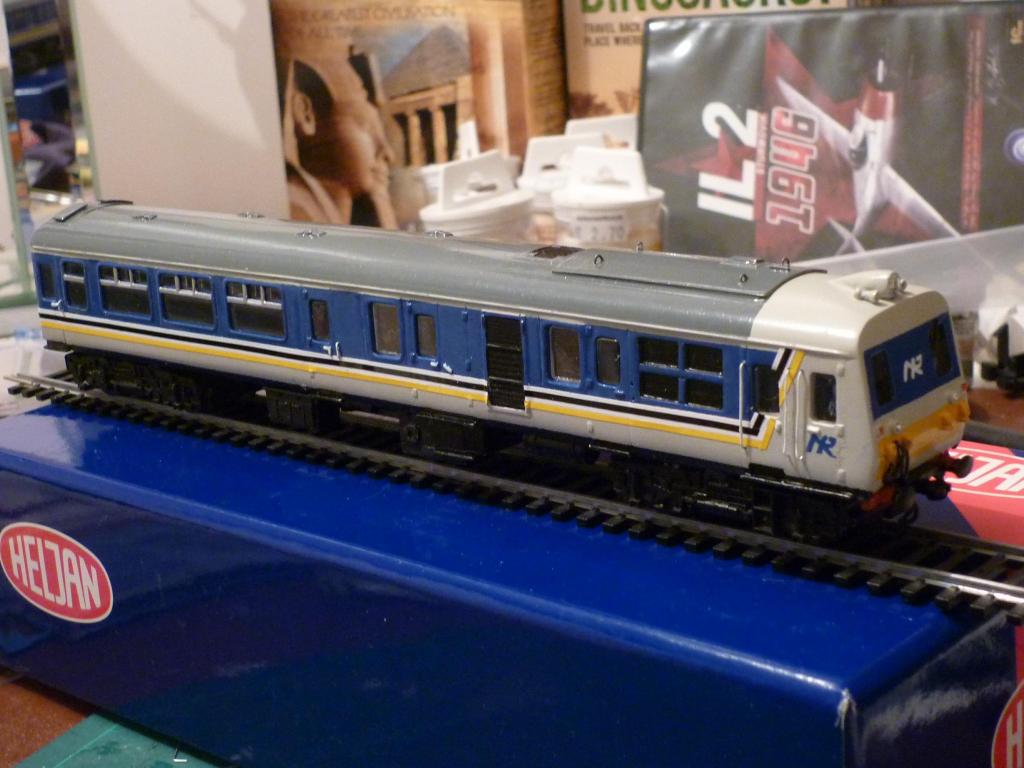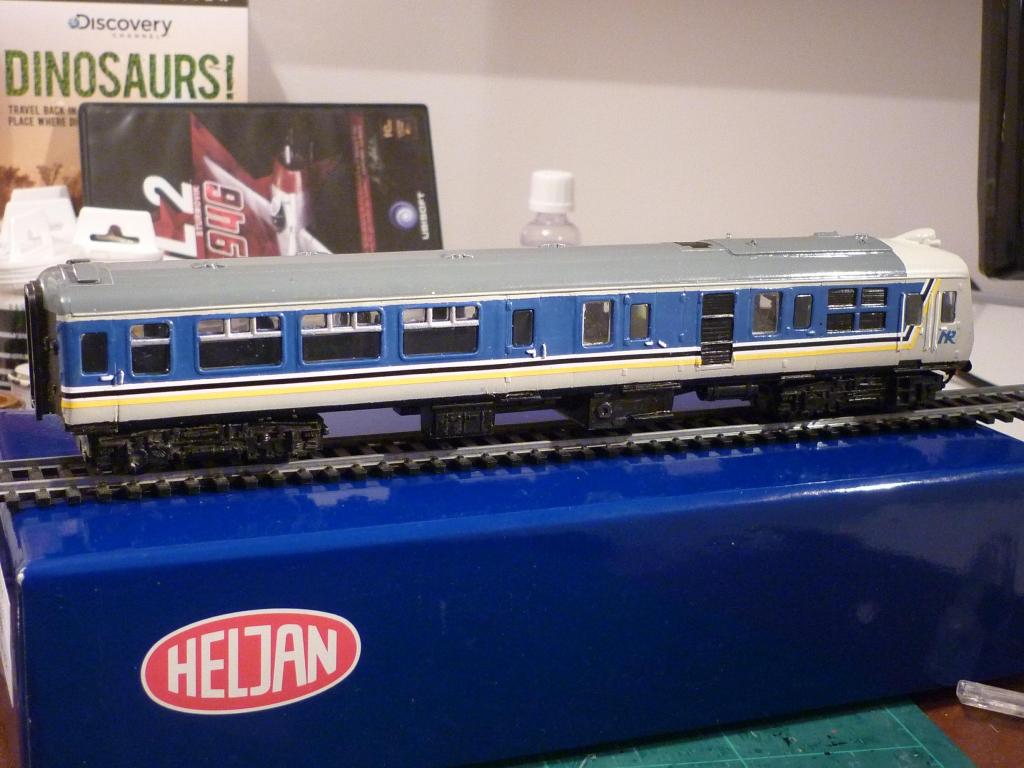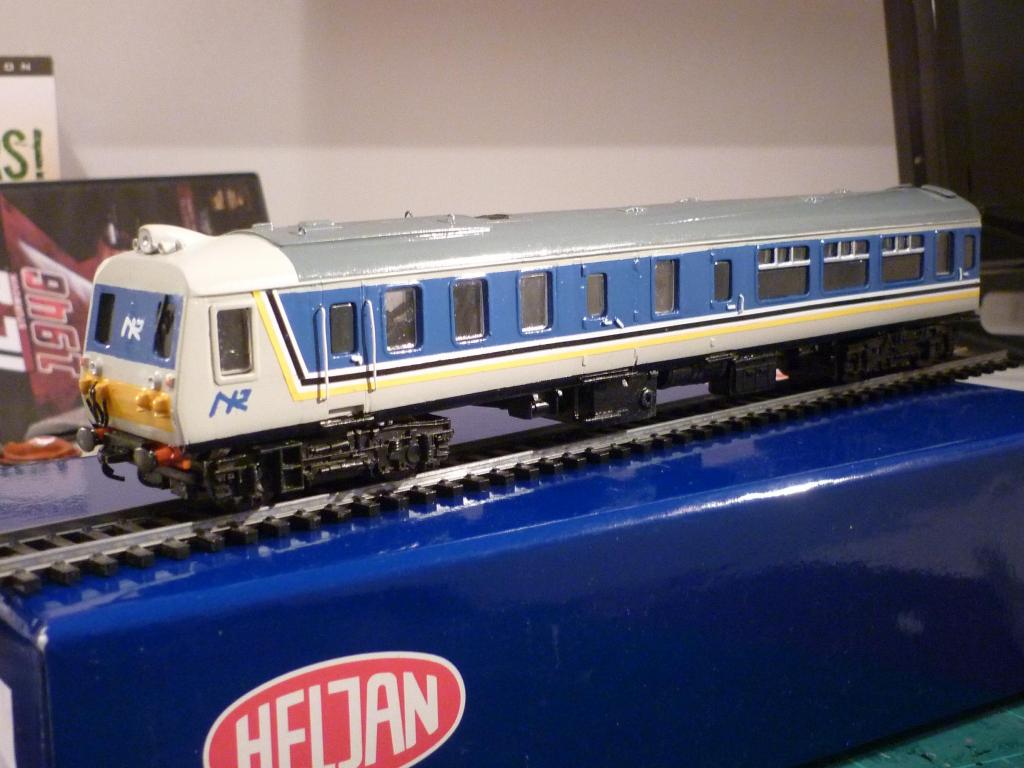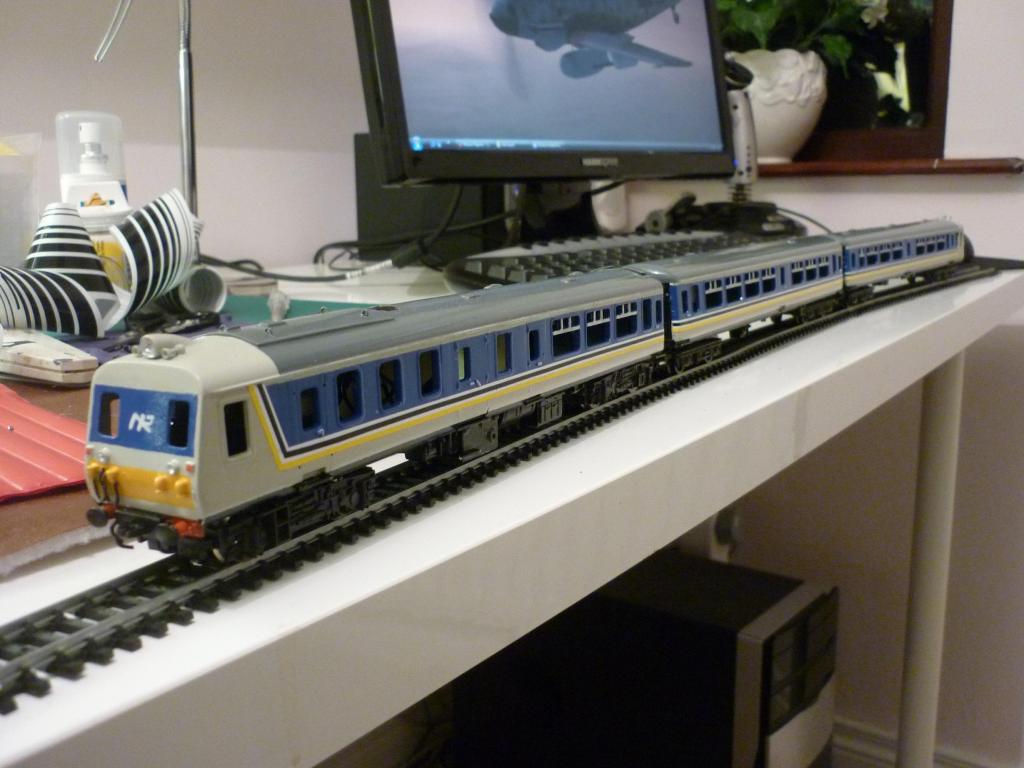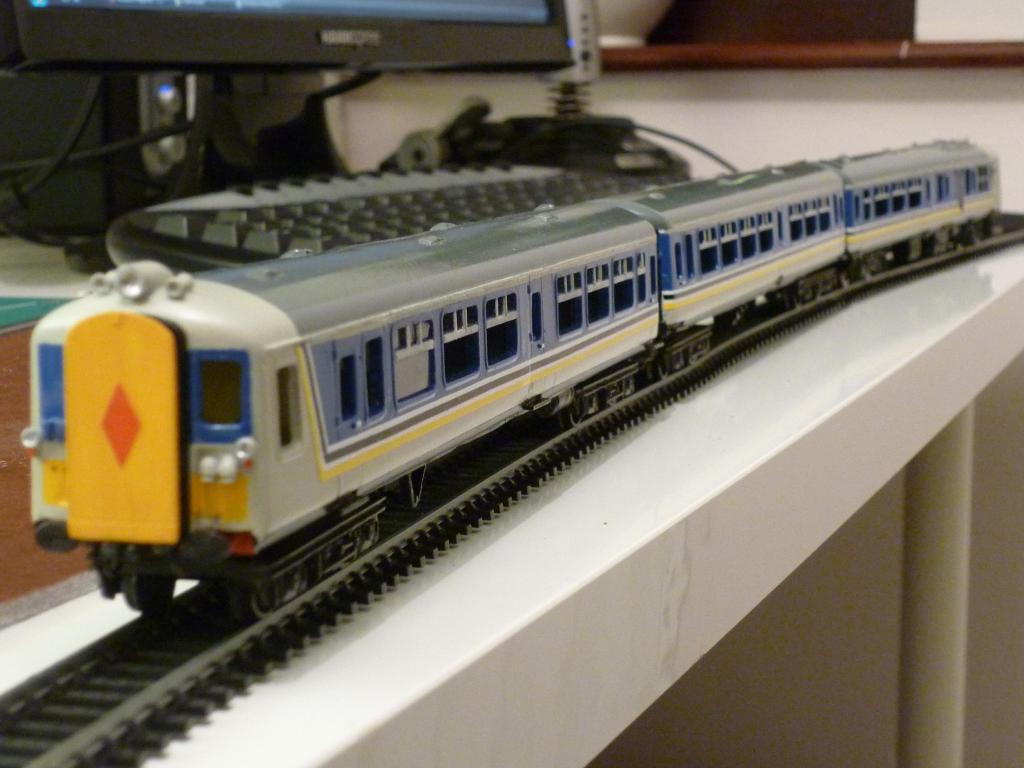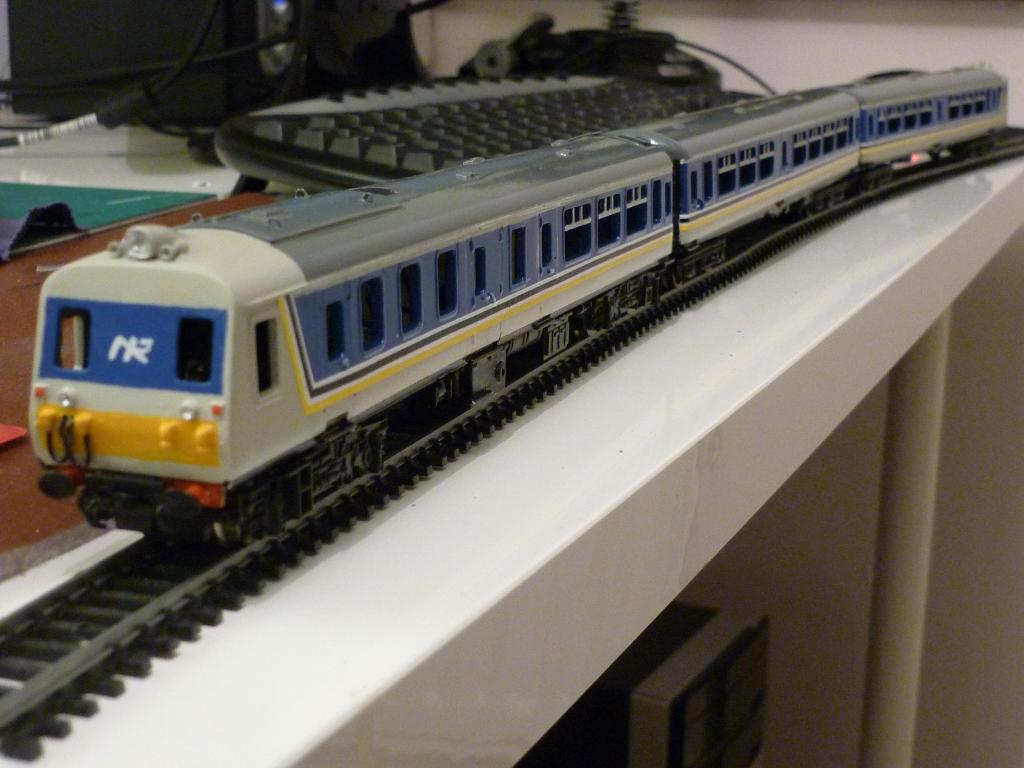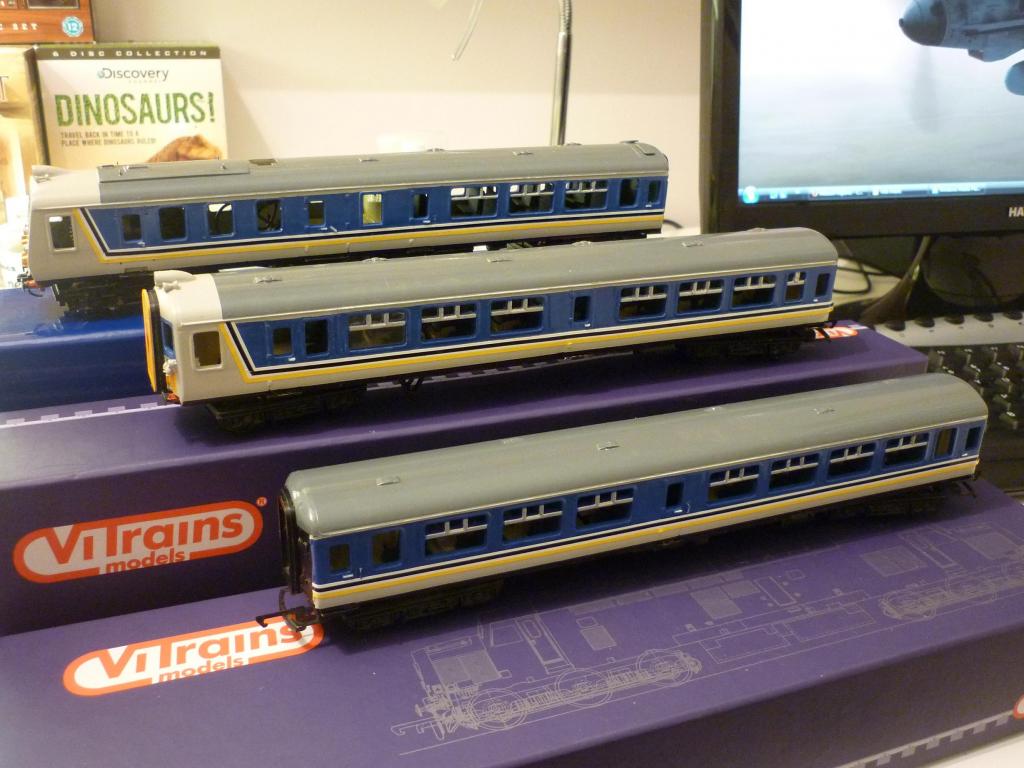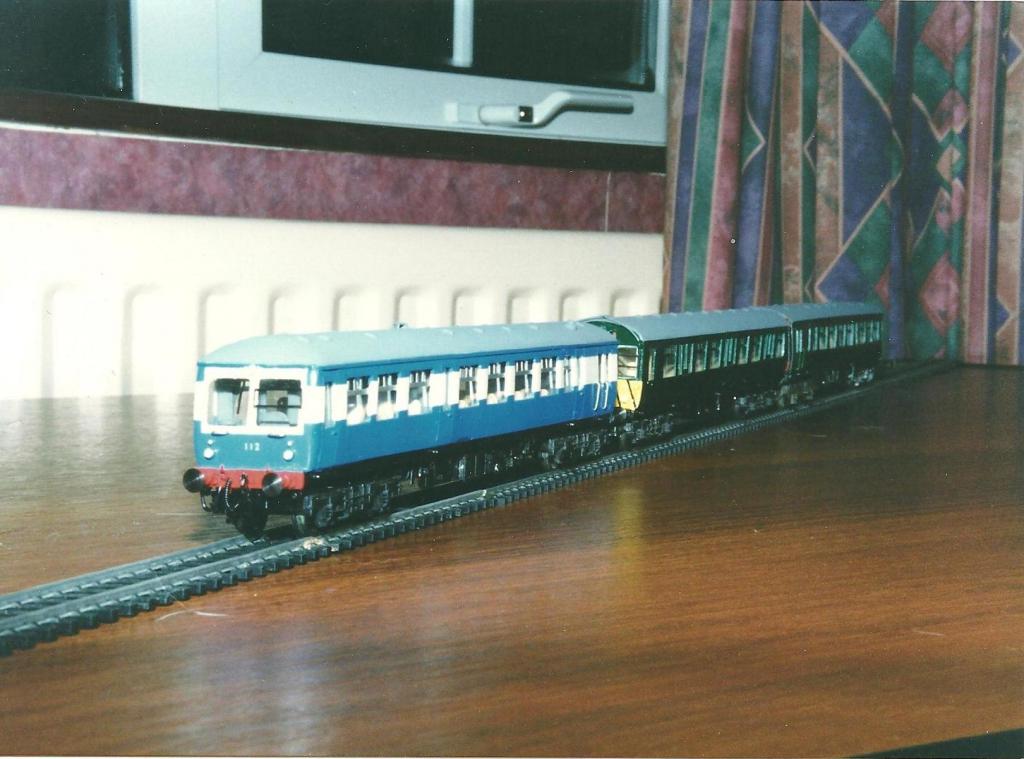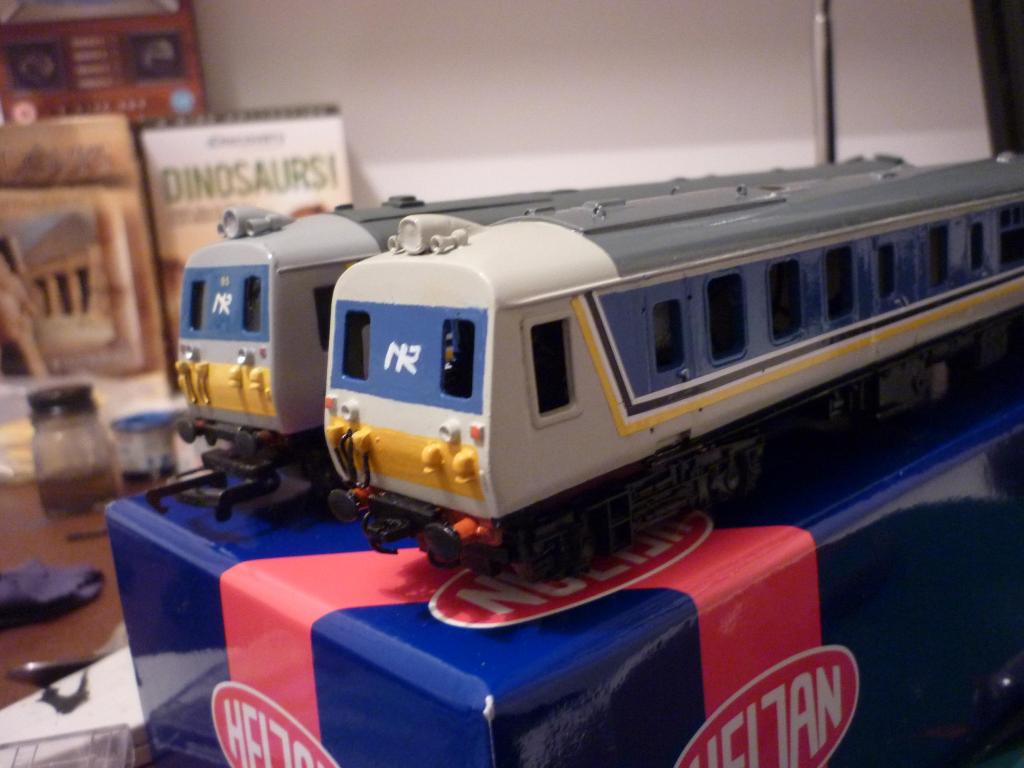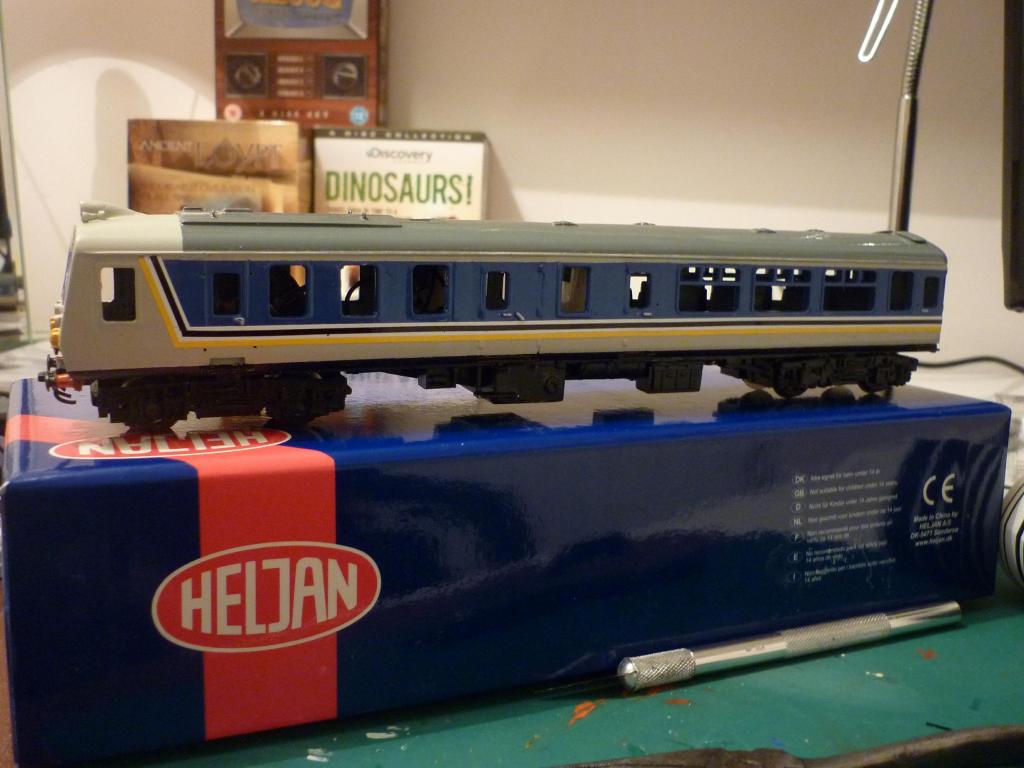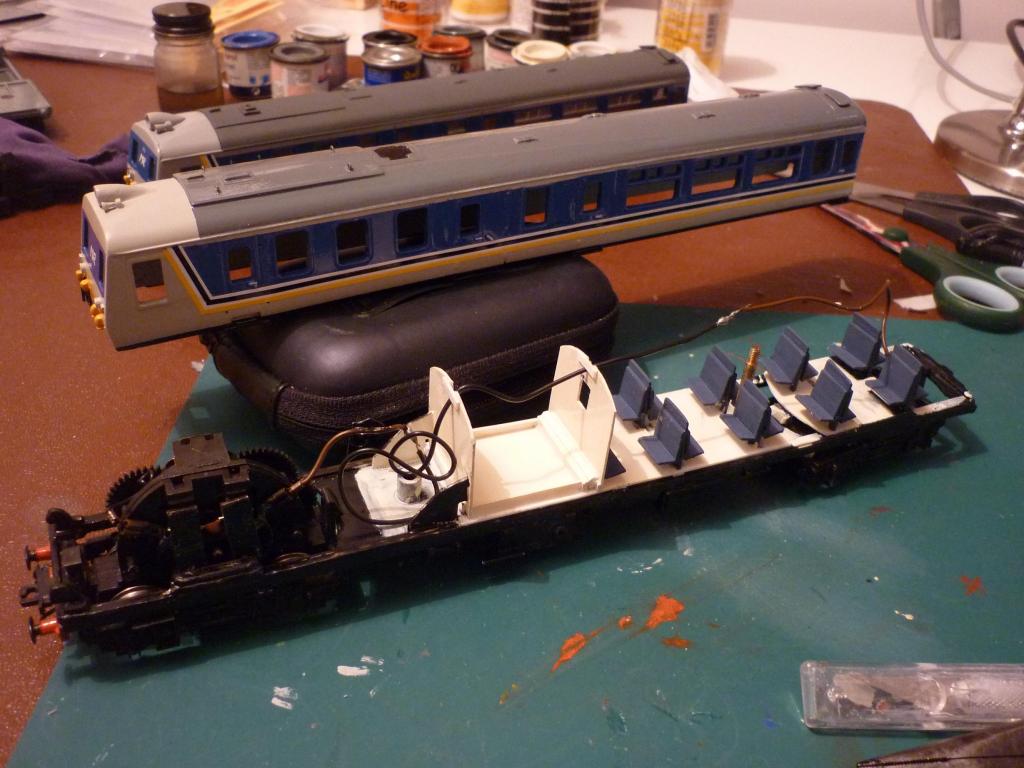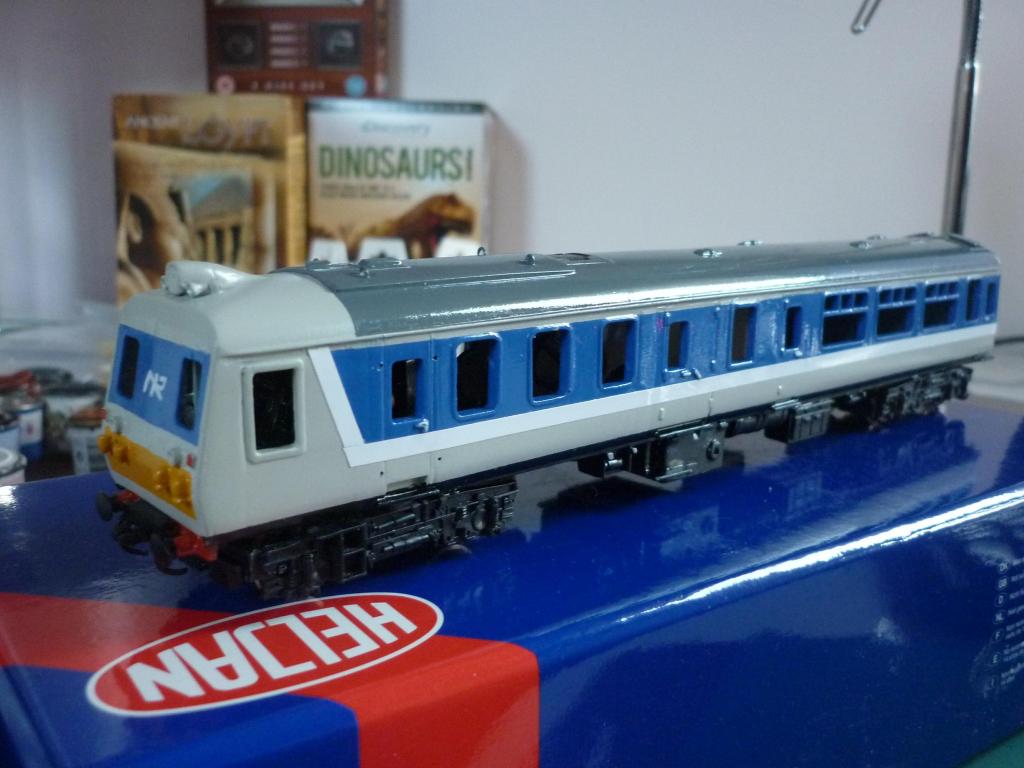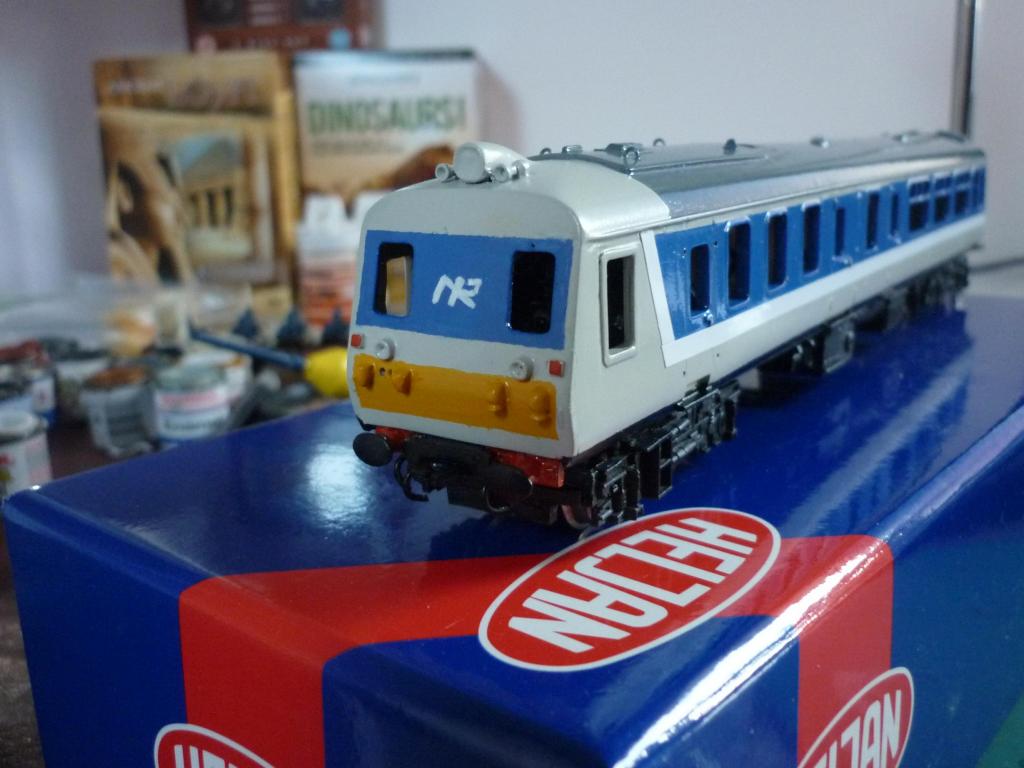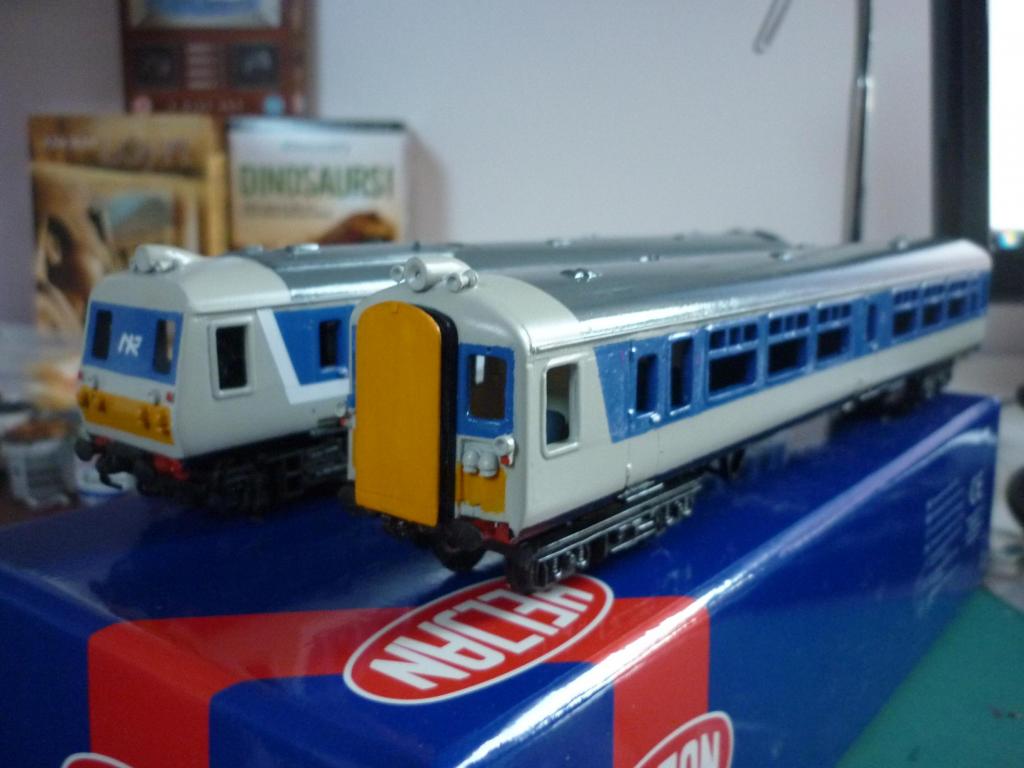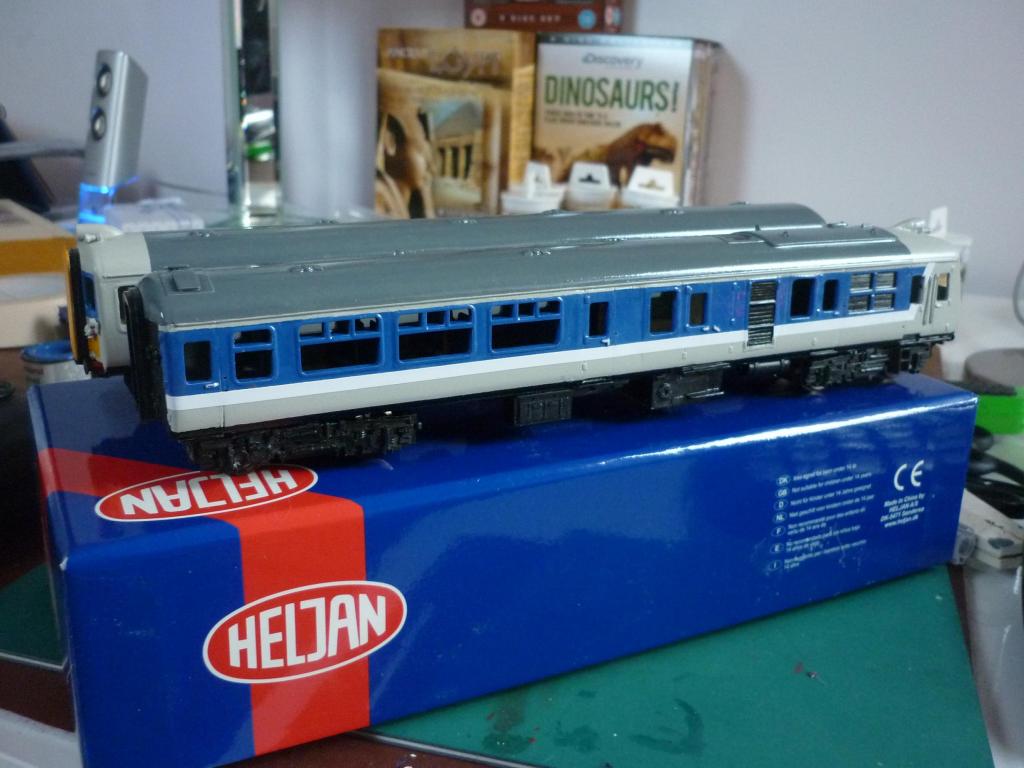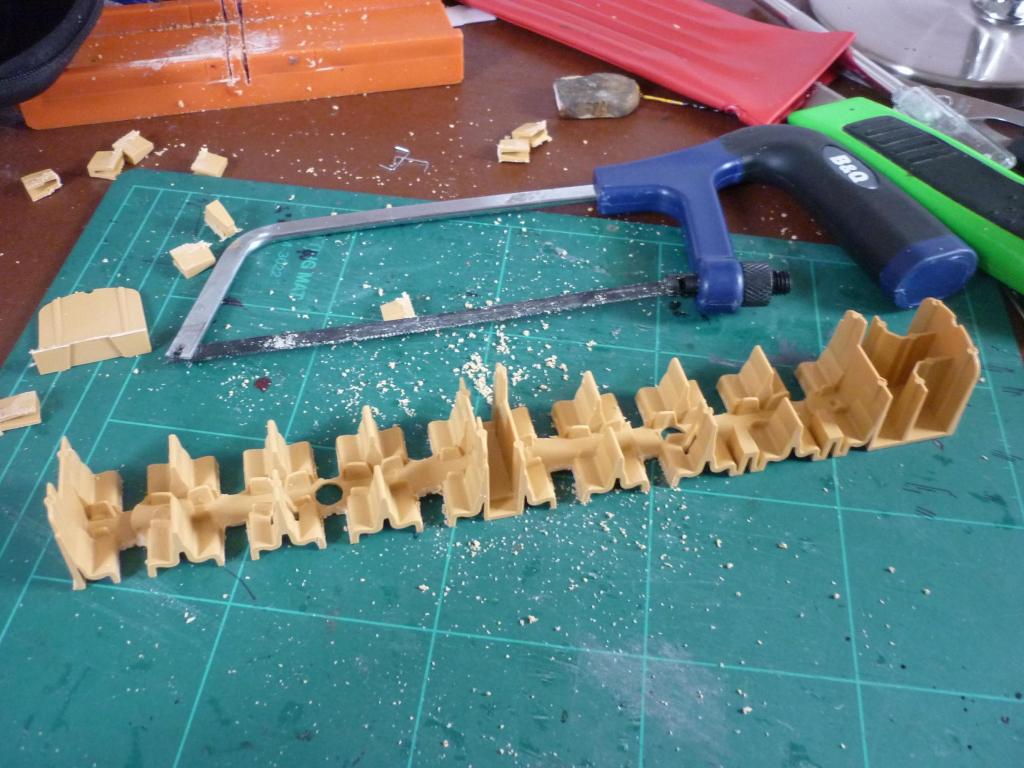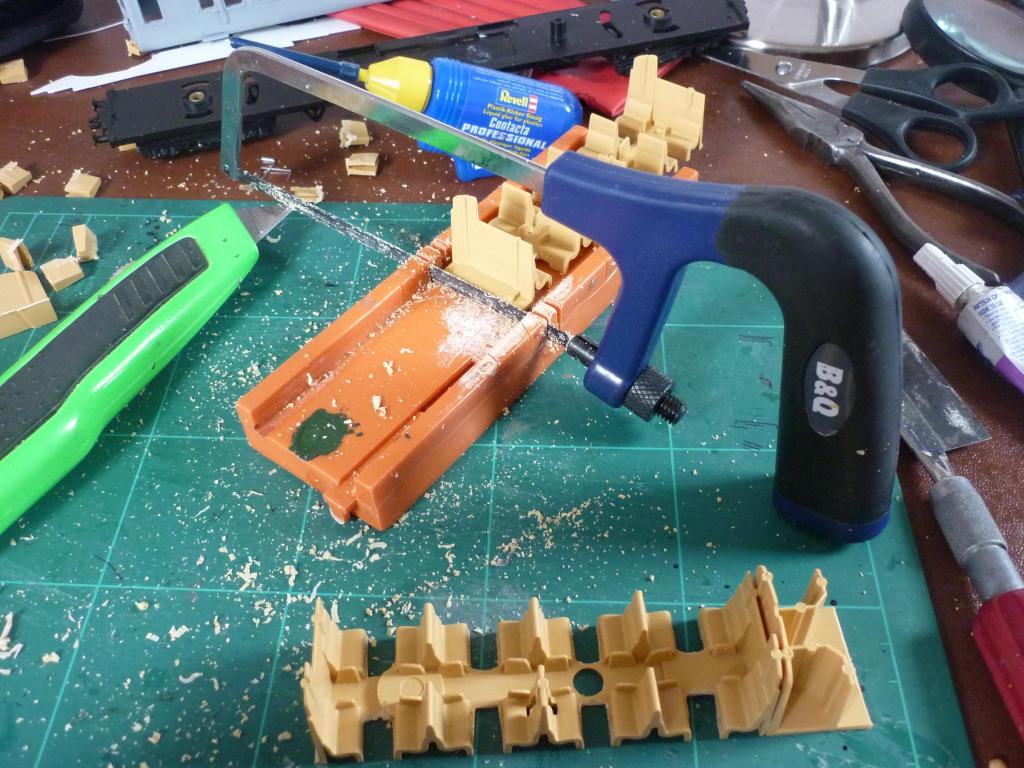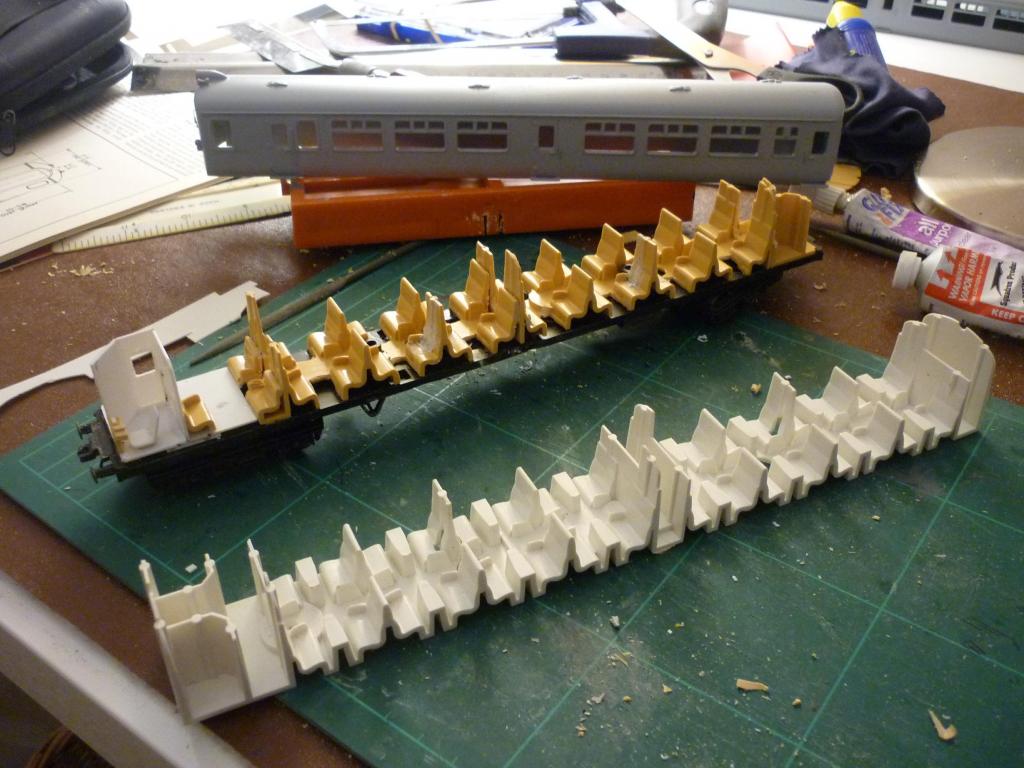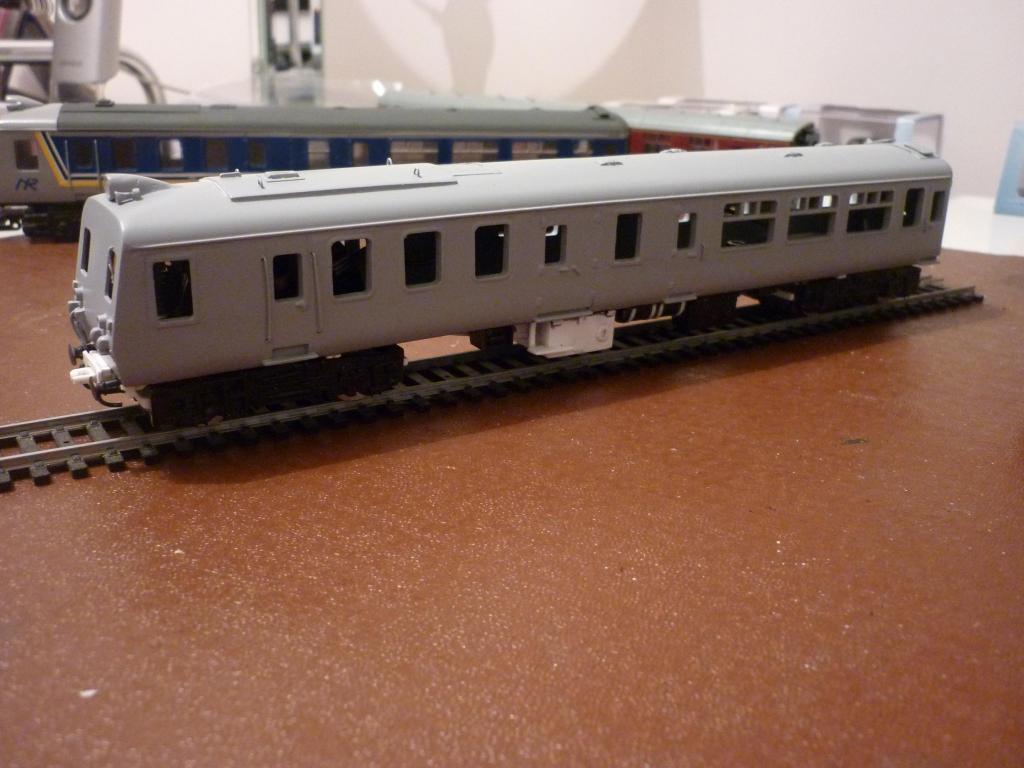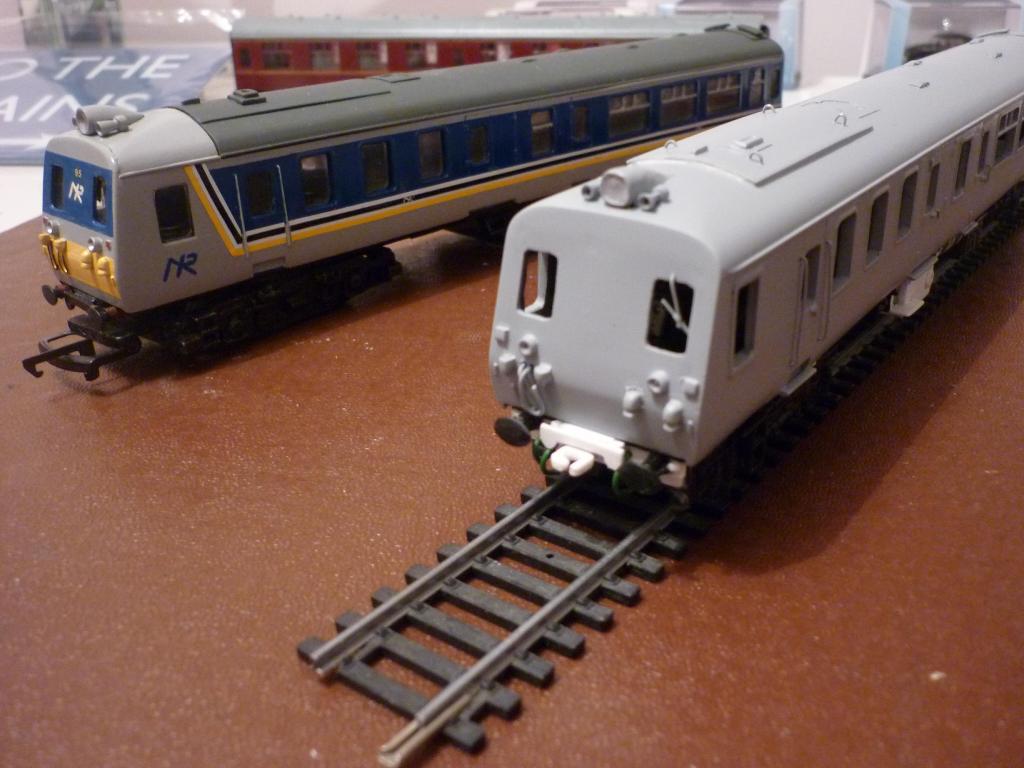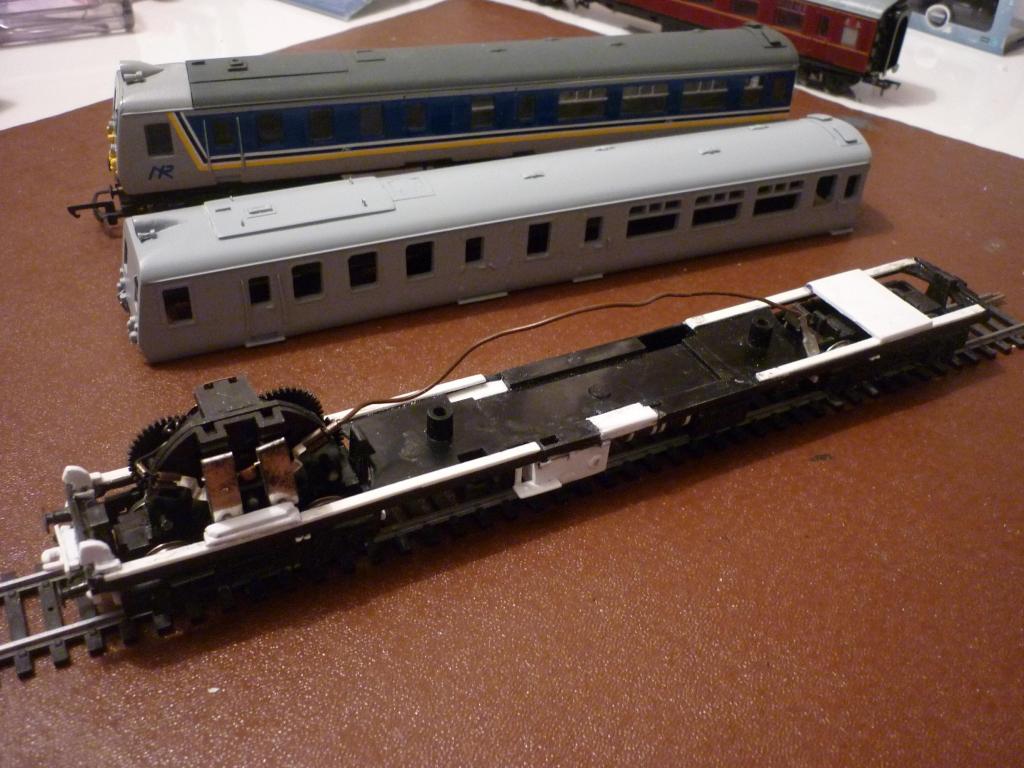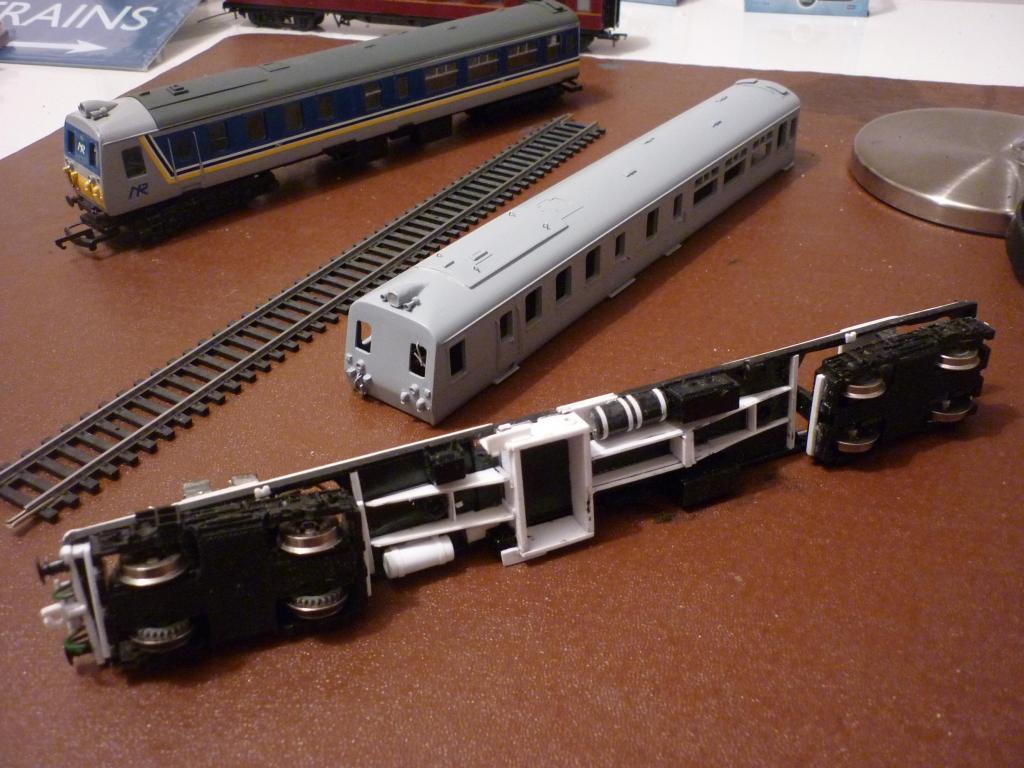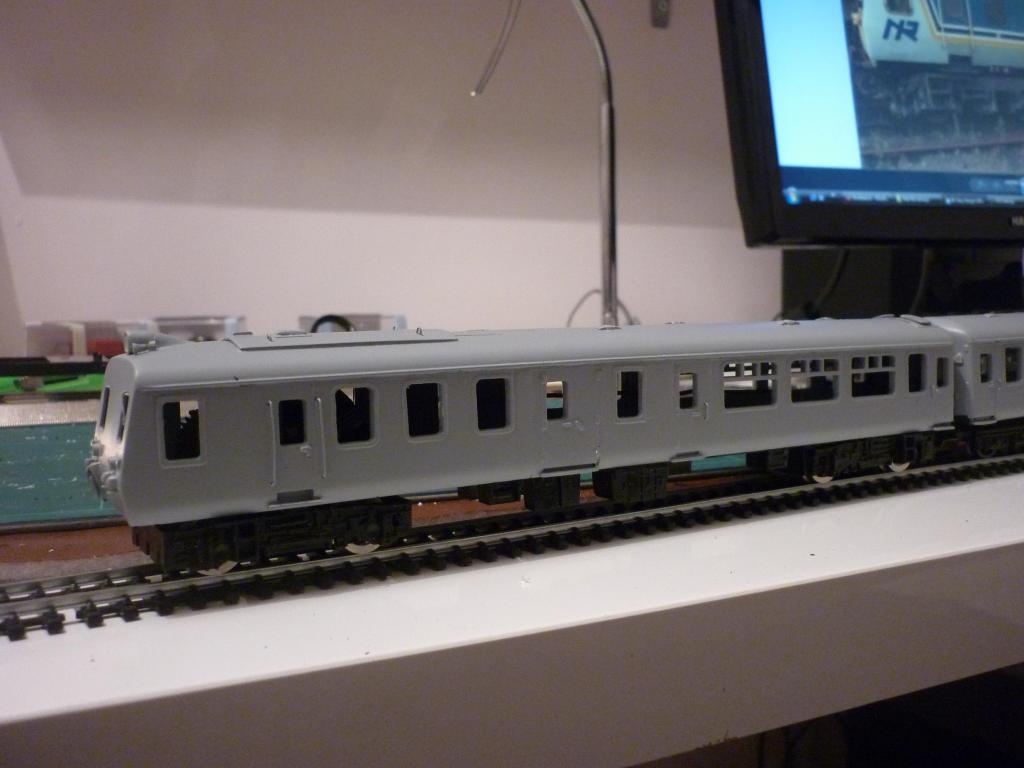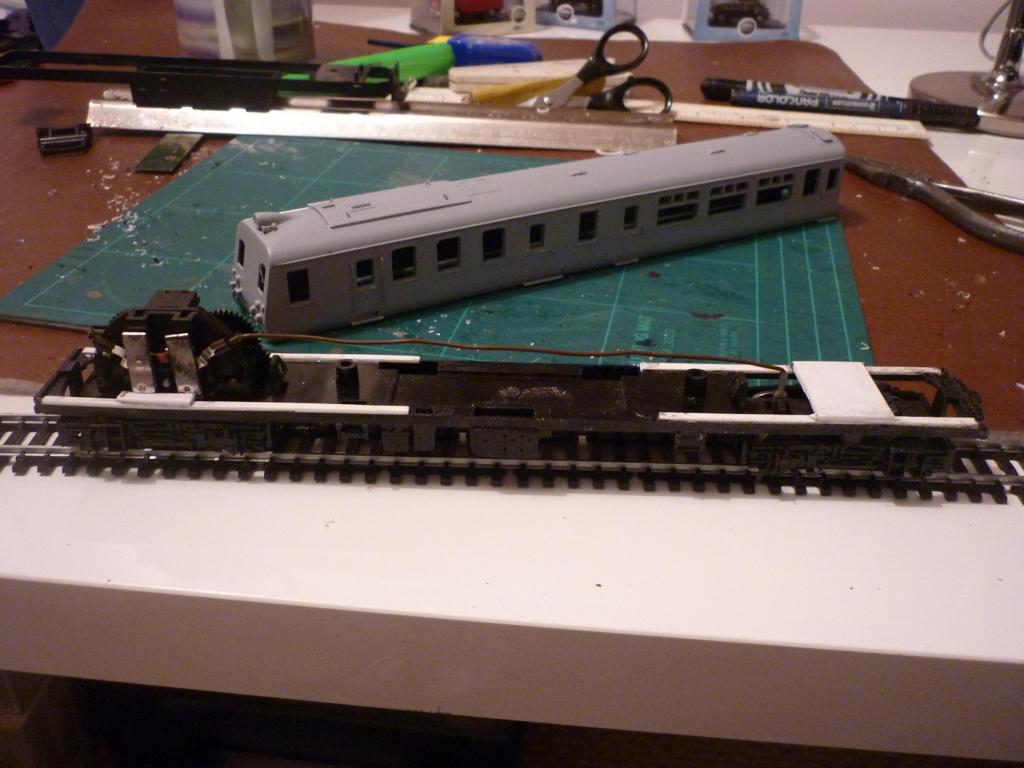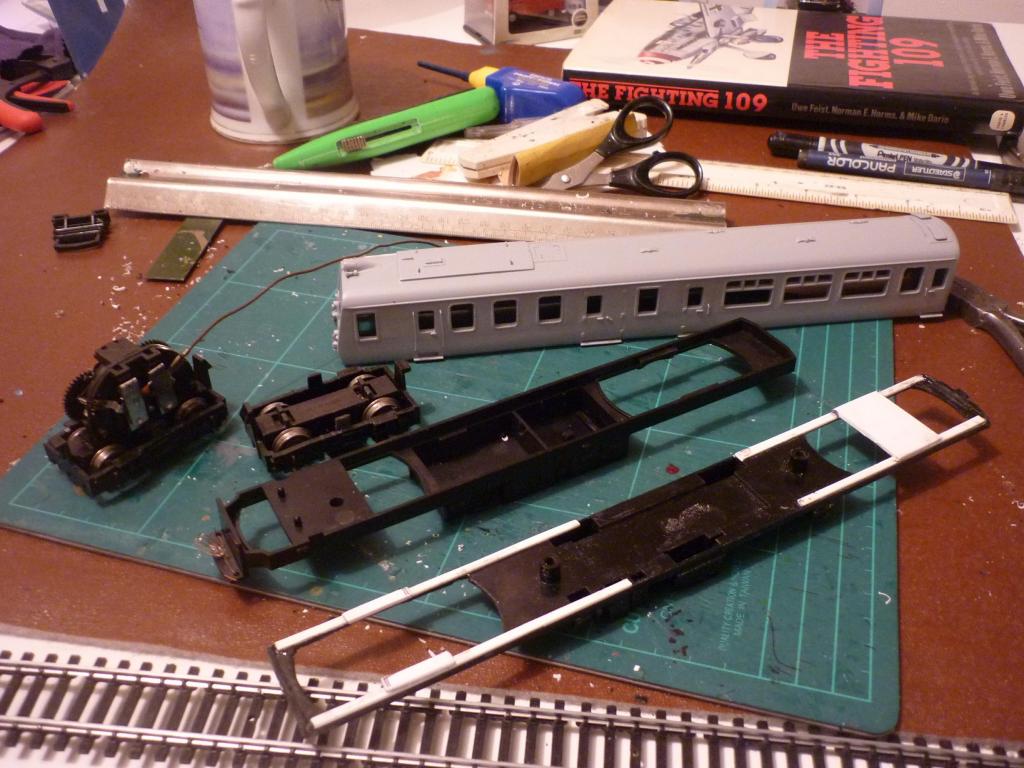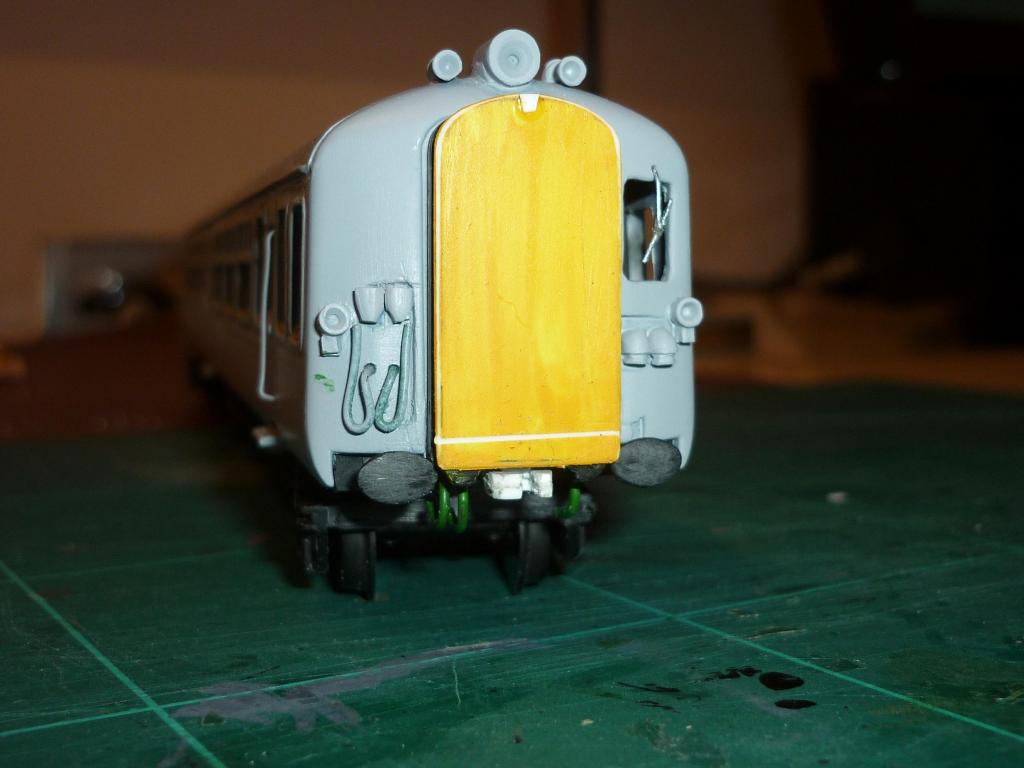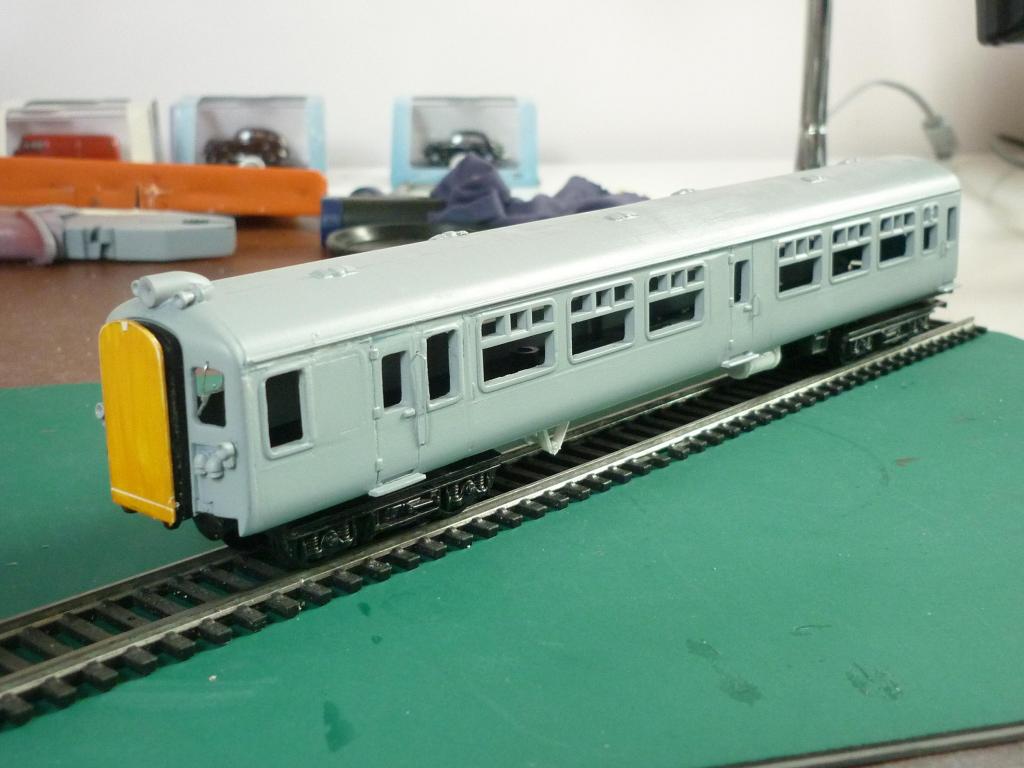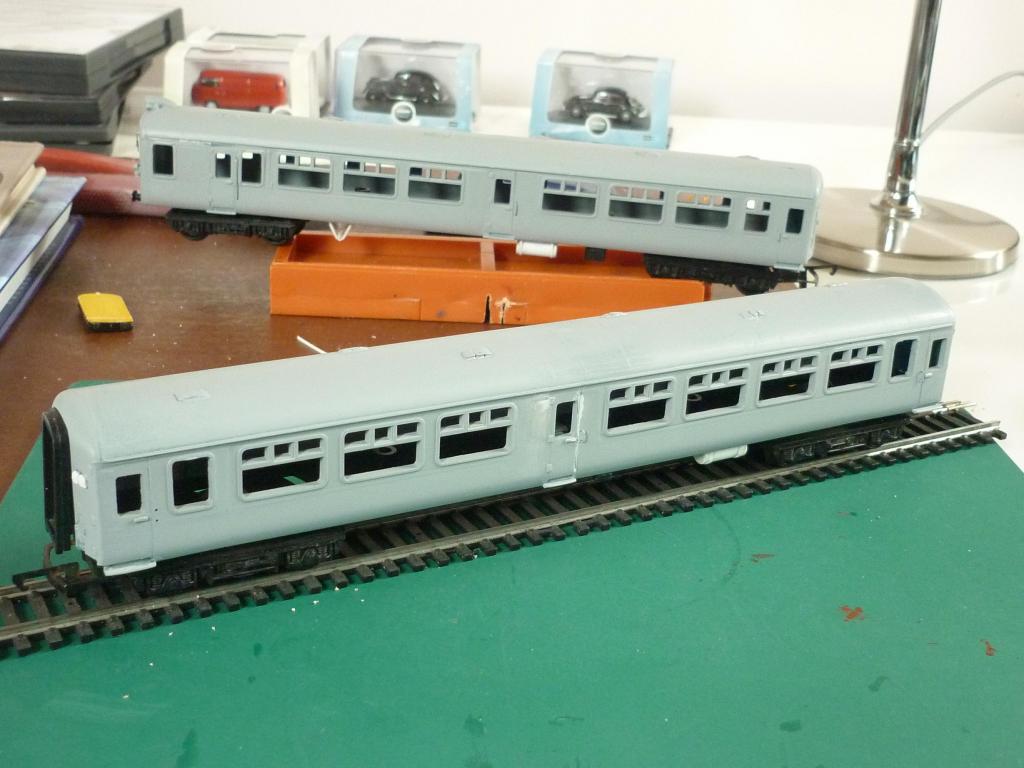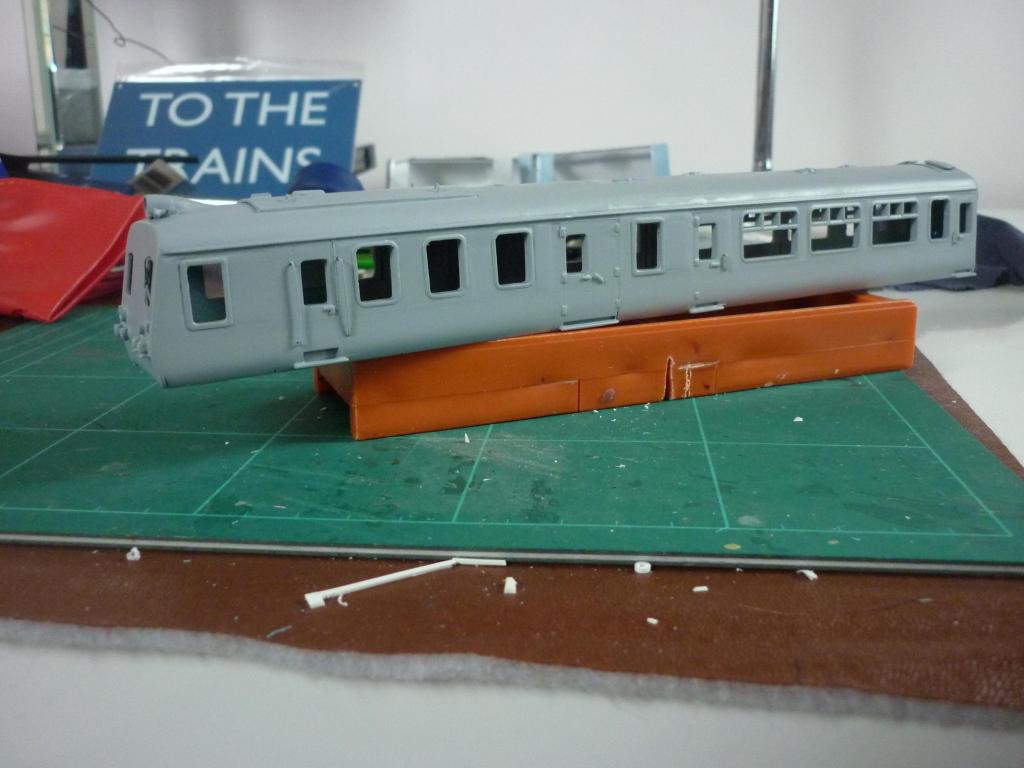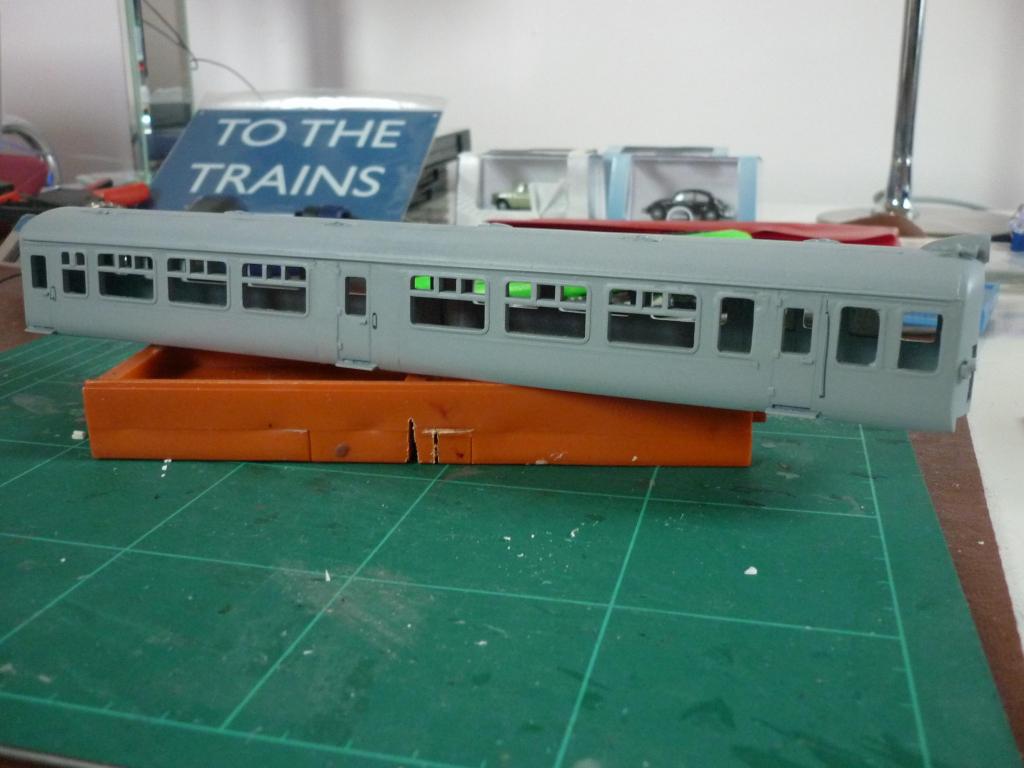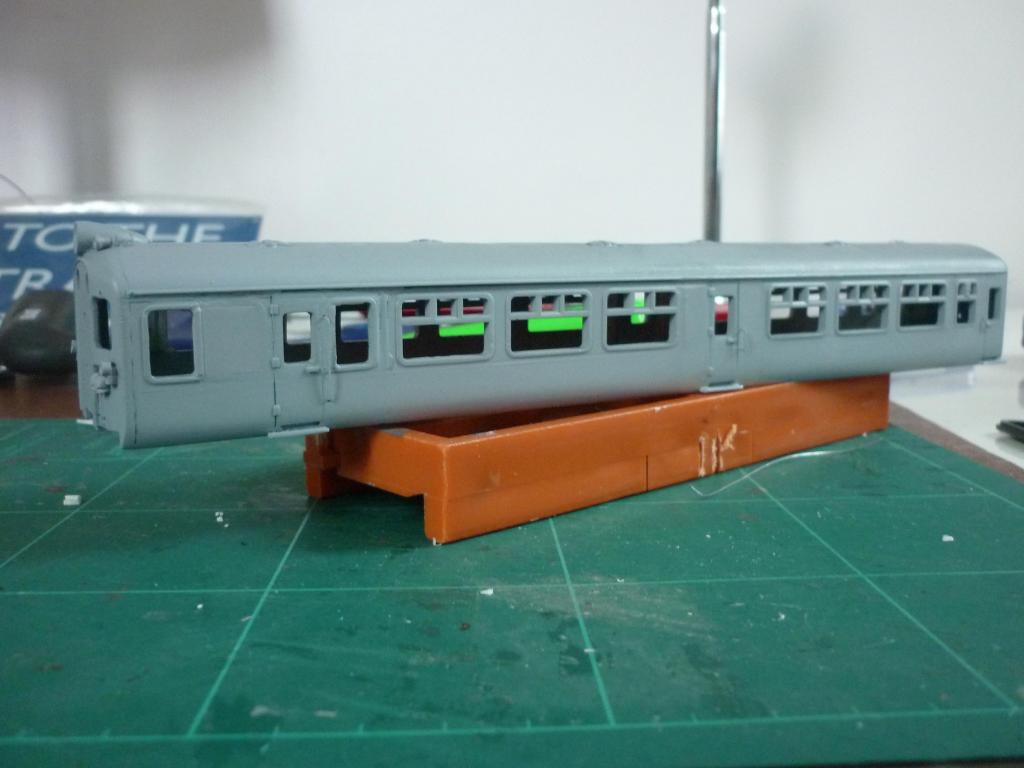-
Posts
183 -
Joined
-
Last visited
Content Type
Profiles
Forums
Events
Gallery
Blogs
Store
Community Map
Everything posted by 33lima
-
Thanks for the positive comments guys, it's really encouraging! And yes Nelson, I have another one or two of these to make, but it looks like it'll be a 70 Class DEMU, next, for a bit of variety if nothing else. No Rich I haven't tried Cliffs of Dover. My 512Mb 8800GT isn't really up to it (tho it plays Rise of Flight reasonably well) and the single-player campaign sounds a bit weak ('Spitfire girl' or no 'Spitfire girl'). It's only since I tried the Dark Blue World mod, which seems to support the ETO much better than previous iterations, that I've really got into IL-2, tho I've played it on and off from the first version. In between sessions on the 80 Class, I'm currently having a blast with FlatSpinMan's and Bloelcke's Defence of the Reich campaigns, well worth trying if you miss the sort of missions you get in European Air War: http://combatace.com/forum/307-mission-reports/
- 170 replies
-
- nir railcar
- nir 80 class
-
(and 2 more)
Tagged with:
-
Work has now been concentrated on the power car, which is now basically complete. First task was to apply the flush glazing. The tricky bit here was dealing with the larger rectangular windows - eg the three on the LH side at the engine compartment - which had their horizontal framing removed during construction, and which therefore aren't covered by the SE Finecast Mk2a Flushglaze set. Home-made flush glazing was made for these by cutting approx 9mmx12mm pieces from the clear front of a CD case. Corners were rounded and these were then 'glued' onto a slightly-larger rectangle of thin clear plastic sheet, using Humbrol Clearfix. They were then fitted and glued from the inside in the same way as the normal flush glazing. They are slightly recessed; I could have simply used the CD cuts and tried to keep them more 'flush' but they would have been liable to be dislodged on handling and more difficult to refit without messing up the paintwork. Next, the cab-side NIR logos were hand-painted on, in Humbrol French Blue. The logo on the RH side is smaller on the model as it was in real life, as it fitted onto the cab door on that side. Next I fitted the cab-front glazing. These were not flush-glazed as the plasticard - tho re-inforced on the inside - is thin enough to make this non-essential. I then fitted a wiper to the LH window. This was made from two strips of plasticard painted black and 'glued' in place to the window with Clearfix. This replaces the wire one I'd made as I think it's neater. Finally, I re-fitted the wire handrails and grab handles, and painted these, and the door handles, white. All that remains now for the power car - apart from fitting a grab handle I missed and numbering - is to fit a coupling or loop to the rear bogie (having had to remove the extended HST one) and give the roof a coat of matt varnish, which I'll leave until all three cars are finished. At TrainMan's request I'm not going to bother with cosmetic sideframes so the bogies will stay as they are. The offset front step is pretty-well in the correct position for the 80 Class and I've cut some excess plastic away from the Hornby one's front 'skirt' which somewhat improves the appearance.
- 170 replies
-
- nir railcar
- nir 80 class
-
(and 2 more)
Tagged with:
-
What a difference from an RTR wagon or kit! I like my locos and coaching stock clean, but you've proved that goods stock really looks best weathered!
-
Very nice Michael! Hadn't a clue what was going on tho, until I found a Youtube clip showing how the Faller system works! What will they think of next! And there I was, thinking that Triang's Minic Motorways were neat back in the '60s! Lovely little piece of suburbia you'll have there!
-
This thread might be of interest; http://irishrailmodel.com/showthread.php/1574-D301-Class ...also the drawing here: http://irishrailmodels.com/2012/01/25/d301-class-locomotive-drawings/ ...and Steve Johnson's modelling article in Issue 5 of 'Irish Lines', here: https://www.dropbox.com/s/zgbbr6m6jvvi1cp/Irish%20Lines%20-%20Issue%205%20-%201993%20Winter.pdf
-
Update after some more work this weekend, showing the Trimline lining applied to all three cars. Passenger window frames have also now been picked out in silver, as have the insides of the lights. The Trimline sometimes tends to lift where turning the corners of the coaches at the ends and will be stuck down firmly later. Flush glazing is starting. I discovered that I needed to file back the inner edges of the ventilator framing to get the SF Finecast flushglazing to fit, a common situation on thicker-bodied coaches like Lima or Hornby Mk2 coaches. I had already cut this back a bit but needed to repeat the process, likely as painting had undone some of my work. Some windows aren't covered in the flushglaze sets and will have to be made separately, possibly using CD jewel case covers.
- 170 replies
-
- nir railcar
- nir 80 class
-
(and 2 more)
Tagged with:
-
Thanks for posting Leslie, I hadn't taken any pics of the BUT set or the GN coaches before despatching them (in fact I had forgotten all about making the BUT set) so this is the first time I've seen them, since...when was it, about 1997? Would love to see pics of the other coaches too, how many were there, three or four, can't recall now, one was a kitchen car I think. There must be about two miles of plasticard strip in that lot! Still have your brass K15 unbuilt, give me a shout next time you're 'in country' and I'll drop it off!
-
Contemplated this back in the 1990s but I don't think there's a lot to be gained. The bogies aren't the same I believe and a set of valances isn't a big help (easy to reproduce in plasticard and not needed at all for some periods). Might as well choose any other DMU chassis, especially if the length is about right. I ended up making bodyshells from thicker plasticard bulkheads and thinner plasticard sides, epoxied to MJT aluminium roofs, with a Tri-ang motor bogie for the UTA set and a Black Beetle for the GNR(I) one. These days there are obviously other options for the power train.
-
Hi Popeye I used this stuff for the lining, ModelTechnics Trimline: http://www.modeltechnics.com/trimline.htm I contemplated trying to make, print and apply the lining stripes as home-made decals using white decal film but there were a lot of points in the process, up to an including application, where I was concerned this could produce an inferior result if not go completely t*ts up. The Trimline has an appreciable thickness even after you have scored on door or panel lines but it goes with the medium-to-semi-gloss finish I prefer and it produces a neat, durable result so I settled for that.
- 170 replies
-
- nir railcar
- nir 80 class
-
(and 2 more)
Tagged with:
-
Hi Rich there are various suggestions in some archived issues of 'Irish Lines'; admittedly, while Model Irish Railways was still in business, this was before the likes of Provincial Wagons, Murphy's Models et al came onto the scene: http://newirishlines.org/archive-2/ For example, issue 5 has a piece by Steve Johnston on making a D310 class 0-6-0 diesel from a Lima BR Class 08, and an article by Jim Maguire on 'Kits and RTR adaptions for Irish railways'. issue 6 has a piece on converting RTR carriages by Steve Johnson, including making a Park Royal from a Hornby Stanier. There is also, as Glenderg mentioned, a lot of useful information on RTR adaptions (for coaches in particular, but also some on goods stock) and some inspirational pics of such things, in 'Modelling Irish Railways' by Steve Johnson and Alan O'Rourke: http://www.amazon.co.uk/Modelling-Irish-Railways-Stephen-Johnson/dp/1857801857 PS the pics at the bottom of this page give some idea of what was, and could still be, achieved by simply repainting readily-available 9now second hand) BR RTR diesels (tho the Hymek would have looked better in maroon or light blue as an NIR Hunslet with some cosmetic cab-front modifications, and if you're going to repaint a Lima Class 33, you might as well at least sand down the cab roof cowling and replace the two front window pillars with a wider, single central one): http://www.mywebsitespace.co.uk/Irish_Rail.html
-
Don't have a layout yet Kirley, just a partly-ballasted double track oval in the garage, but am looking forward to seeing it running on TrainModel's excellent layout when he's taken delivery, which hopefully won't be TOO long now:
- 170 replies
-
- nir railcar
- nir 80 class
-
(and 2 more)
Tagged with:
-
You're too kind, really guys, especially as those close-ups really expose my limited abilities with paint! Final pics for tonite, showing the Trimline completed on one side of the power car; also the latter's interior, complete with soldered rear bogie pickup wire extension and seating and floor/bulkheads made from plasticard sheet, cut away as needed at the rear to allow for the swing of the bogie clips and pickup. Original 1992 model in the background of the first pic.
- 170 replies
-
- nir railcar
- nir 80 class
-
(and 2 more)
Tagged with:
-
Painting is now well under way. All three bodyshells were sprayed with Halford's Ford Polar Grey. This turned out to be a slightly warmer shade than the more blueish-grey version I used back in 1992, but I think it's at least as good a match for the NIR shade. When this was thoroughly dry, the sides were masked and the upper panels brush-painted on with Humbrol gloss French Blue. It was hard to get the masking tape into the narrow strip under the gutters and a certain amount of touching up was necessary. Next, the blue and then yellow panels (Humbrol Lufthansa Yellow) were painted on the cab ends of the motor car and the driving trailer. The buffer beams were painted a bright orange-red shade and the roofs brush-painted in Humbrol gloss Dark Admiralty Grey (they will be coated with matt varnish later). The 80 Class in this 1990s livery had a black strip along the bottom edge of each side at about solebar level and these were brush-painted Revell Satin black after more masking. The roof and side grills on the motor car were touched in with Satin Black. At this point, I brush-painted in the white NIR logo to the motor cars cab front. I then cut the wire between motor and trailing bogies and soldered in an extension wire, to allow for the extra distance between the ex-HST power bogies, and checked it moved freely and still ran on some test track. I then glued back in place the corridor connections I had removed at the outset. Finally, I started the process of applying Model Technics Trimline adhesive vinyl stripes to the motor car sides, below the blue panels. I had forgotten how fiddly this is to apply, but the end result, tho thicker than waterslide decals, is, I found when using it on my 1990s 80 Class sets, precise, neat and durable, so I ended up using it again. So far I have only applied the deep white line; next will be a shallower yellow one below this then a black one along the centreline of the white strip. Finishing the lining process will be the next step.
- 170 replies
-
- nir railcar
- nir 80 class
-
(and 2 more)
Tagged with:
-
OK, the first interior/seating unit has just been built. I started with the driving trailer, adapting the seating unit that came with the donor Hornby Mk2a TSO coach. Courtesy of Google, I recently stumbled on this article by Shane McQuillan, which described his effort at an 80 Class set, from the May & June 1984 'Practical Model Railways': http://www.preservedthumpers.co.uk/nir80model.html I had been vaguely aware of this model back in 1992 when I built my own, but what I didn't know until I found this article was that it includes works drawings. While these lack underframe detail, they show interior layouts, so they came in quite handy! I have little patience with making interior detail and have 'left it till later' in several of my models. Not this time though. So it was out with the junior hacksaw, (battered) mitre box and Stanley knife and off I went. First, I removed the tables in each seating bay by making a hacksaw cut in from the base each side, as far as the central aisle. The tables were then folded up and removed and the gaps tidied up. The interior units have a central vestibule and feature double toilets at one end, and no corner driver's cab of course. So the next job was to cut up the unit into sections, re-assembling these to recreate seating bays and a single toilet which all line up with the different window layout on the 80 Class car. Finally, I added the driver's cab partitions and seat from plasticard, and a basic representation of the driver's desk, on a new plasticard floor extension. The real unit has 2+3 seating but I didn't mess with the donor unit's equally-divided seating (3+3 or 2+2?). The new unit was glued in place on the chassis/underframe unit. Before doing this, I had to replace the coach's metal ballast weight. This is a rectangular bar which sits in a recess in the chassis/underframe unit, but it sits proud of the recess and fouled the reconstructed seating unit, as the latter's corresponding recess was no longer in the right place. So I replaced the weight...with three pennies! One down, two to go...!
- 170 replies
-
- nir railcar
- nir 80 class
-
(and 2 more)
Tagged with:
-
Loolink forward to seeing this one, Nelson, as I plan on making a few GN or NCC vans at some point. There are some good colour pics of (I think!) NCC goods vans in: 'Irish Railways in Colour - a Second Glance' - p.143; and 'The UTA in Colour' - p.76.
-
Bodyshell and underframe construction is now basically complete. Latest job was the detailing of the power car underframe/chassis. This uses the Hornby Mk2a donor coach's underframe, modified extensively to accept the Hornby HST power and trailing bogies. One battery box and a smaller fitting were in the right places so these were left in situ. Everything else was cut off. The motor bogie's brush retaining strips, as the bogie turned, were catching on the top of the mounting 'platform' supporting the bogie and the platforms were raised with an extra thickness of plasticard, to stop this. I noticed that I had forgotten to fit a door handle and grab handle to the door behind the forward engine compartment grill so these were fitted, and a dab of filler was worked into a small but I thought unsightly crevice under the front end of the engine compartment roof panel. A battery box similarly removed from one of the trailers was glued in place on the opposite side to the existing one, just ahead of the trailing bogie, as the power car has two such boxes here, one each side. A fuel tank was constructed from 30-40 thou plasticard and detailed, including adding steps to the forward ends. On the LH side between this tank and the battery box behind it, there is a curved container of some sort and I cut this from a biro barrel cut longitudnally in just over half, with thin plasticard strapping added. Likewise an (air?) tank with strapping was added on the RH side, just behind the front bogie. Plasticard sheet was used to form a solid version of the Mk1-type underframe the heavy 80 Class power cars needed, with some strips added to give it a bit of depth; tho its main function is to prevent too much daylight showing at low viewing angles and to add a bit of rigidity. Lugs cut from 40 thou were added up inside the front buffer beam, to engage pegs glued inside the lower cab front. This, and the existing attachment points and screws, will provide a solid structure when things are back together. Moving onto the front buffer beam, the beam itself was deepened with a strip of thick plasticard. Buffers were fitted which had been cut from the trailers (only cab ends have buffers, in the 80 Class). The visible moulding lines on the buffers were sanded down and the faces buffed. The power cars have a sort of buffing plate which I guess is there to facilitate coupling to driving trailers or cars with corridor connections, for multiple working of sets; this and its mounting were cut from plasticard and fitted. A buckeye coupling was formed from two 'G on a stem'-shaped pieces of card and fitted, as per the driving trailer. Likewise per the driving trailer's buffer beam, florist's wire, cut & bent to shape, was used to simulate the three pipes drooping from the buffer beam. All I have done with the HST bogies so far is remove the push-fit airtank/coupling unit from the motor bogie, cut away the prominent steps from the trailing bogie, and add plasticard strip cross members front and rear, to relieve the rather flat appearance in that area. I may leave them like that. I'll need to add a coupling or loop to the rear of the trailing bogie. Already I think she's looking better in every department than her 1992 predecessor, which you can see in the background. Next job will be adapting the interior units.
- 170 replies
-
- nir railcar
- nir 80 class
-
(and 2 more)
Tagged with:
-
Looking good...love all that maroon and grey! I can practically hear those diesels idling, and feel the excitement again of a childhood day trip about to begin....!
-
Worseley Works is another one worth checking out, which on a quick glance I don't see listed in the manufacturers section: http://www.worsleyworks.co.uk/4mm/4mm_Irish_Standard_Gauge.htm
-
Right another update after the last session today. After a certain amount of mulling over the options, I choose to fit a Hornby short wheel base ringfield unit from an HST power car (also fitted to the likes of the DMU and Class 25, with different clip-on bogie frames). These, and spares/replacements for them, are readily available. They have trailing bogie pickup, can (I understand) be DCC fitted if required, and are easy to service. First task was to strip and thoroughly service the motor and trailing bogies and check they ran well. Contemplating the HST power car chassis they came from, I decided against adapting this. It's way too short but I could have done a cut and shut job with an extension piece in the middle, having removed the underframe components. However, the chassis was fractionally wider than the Hornby Mk2 coach bodyframe, so I would have had to thin it lengthwise, too, a tedious job but also one difficult to get a nice straight edge to and/or a good enough fit, I thought. So instead, I decided to adapt the underframe/floor unit for the Mk2 coach, itself. First, I marked out the cutouts in the floor for the HST bogies, using the HST chassis as a template. The fore and aft edges of the cutout area were drilled through with a closely-spaced set of holes in the required arc. The sides were scribed repeatedly till they could be sliced through. The original bogies were then removed (they are riveted in place) along with the floor cutouts. The solebars around the cutouts were re-inforced with plasticard. Next, again using the HST chassis as a template, I added more plasticard sections, to form the 'roof' (trailing bogie end) and 'shoulders' (motor bogie end). Under these rest the pegs, either side of the bogie frames, which support the bogies and determine ride height. A certain amount of trimming and testing was needed to get everything fitting and moving as it should. The wire linking the power and trailing bogies will need extending, as it is too taut, due to the extra chassis length. I also need to re-work the underframe components, to simulate the appearance of those fitted to the 80 Class power cars. That will likely be the next job, along with fitting buffers and other details to the cab front buffer beam. I haven't yet decided what I'm going to do with the HST bogie frames. Looking again at the Class 33/73 frames I had intended to use to make castings, while the general shape of the frame itself is right, there are many detail differences. I may settle for making some slight cosmetic modifications to the HST frames, which may be just a little short in wheelbase but even as they are, are otherwise a much better job than the Hymek power bogie I used in my original 1990s models. anyhow, the three-car set is now at last beginning to look like an 80 Class DEMU!
- 170 replies
-
- nir railcar
- nir 80 class
-
(and 2 more)
Tagged with:
-
OK last job tonight, fitting buffer beam detail to the cab end of the driving trailer. Referring to pics, three 'C'-shaped loops were cut from some green florist's wire. Using a suitable drill in a pin vice, I made three suitable holes in the buffer bean in about the right places, pushed the long end of the 'C' into the hole, and secured with a dab of superglue in behind the buffer beam. The cab front jumper cables are also visible in this view; these, like the wire handrails, are just roughly pushed into place, as they will need removed before final painting. Likewise, the dangling wiper, which is just a couple of pieces of thinner florist's wire superglued together and pushed into a suitable hole drilled above the driver's front window. The buckeye coupling was made from two 'G'-shaped pieces of 30 thou plasticard, laminated together then glued in place, with some reinforcement from strip, top and bottom. I'll tidy it up a bit after the glue has thoroughly dried, tomorrow. Before that I had moved the car's cylindrical air tank closer to the rear bogie, removing a small box-like underframe fitting to make room, as the tank was previously somewhat too far towards the middle of the car. I had also made some modifications to the area at the corner of the body right under the steps, cutting away some plastic the better to reproduce the Mk2b wraparound door profile. Despite such work, on balance, I still think the Hornby Mk2a is a somewhat better basis for an 80 Class 'cut & shut' job than a Lima Mk2b, tho there's not much in it; and in both cases, the work required can be deceptive. This can be reduced a bit by modelling the trailers which didn't have centre doors, as I did for one of my own sets; but these were comparatively rare, so the centre-door cars are the more representative choice.
- 170 replies
-
- nir railcar
- nir 80 class
-
(and 2 more)
Tagged with:
-
OK, time for an update on the latest progress. The driving trailer and centre car have now been primed, fitted with wire handrails and (on the cab front) jumper cables and wiper. I was unhappy with the alignment of the roof vents on the centre car and with the original, somewhat over-sized roof headlight on the driving cab, so I removed and replaced both. A corridor connection cover was cut from 20-30 thou plasticard and fitted to the cab-end component. Work on the trailer underframes has also been completed, short of putting some buffer-beam detail onto the cab end. Most existing components were cut off, as was the cab-end bogie's coupling. Air tanks and strapping were added from plasticard sheet and tube, as were such brakegear (?) components as available pics show, which seem different between driving and centre trailers (driving trailer detail shown). I'm quite pleased with the way these are shaping up. Next step will be a final coat of primer then Ford Polar Grey carspray, as the base colour for the 1990s blue and grey 'corporate' livery. Then adding some buffer beam detail to the driving trailer cab end and starting work on the power car chassis. Getting there!
- 170 replies
-
- nir railcar
- nir 80 class
-
(and 2 more)
Tagged with:
-
This any good? Not sure about the date but it obviously pre-dates Yorkgate, tho it's after the post-WW2 York Road station buildings were demolished; I'd say, 1980s. It's from an OS map that I got this extract copied from, in Belfast Central Library about 1992. PS in uploading here, the filesize has been taken right down but I can email you a better image if you need it.
-
Great work there. Love the hoppers especially!
-
Nice pics. Like the front end detail on A39 especially, impressive!
-
Latest pics are of the bodyshells of the power car and driving trailer, after first applications of grey primer. As with the power car, the driving trailer needed much surface detail to be restored or added, including horns, roof and cab front lights, footsteps, door handles and hinges, new roof ventilators, etc. As usual the primer showed up some spots where a bit of tidying will be needed but not too much. Wire handrails will be removed for final painting. Next step will be the same work on the centre car, then probably the underframes.
- 170 replies
-
- nir railcar
- nir 80 class
-
(and 2 more)
Tagged with:
.png.c363cdf5c3fb7955cd92a55eb6dbbae0.png)


